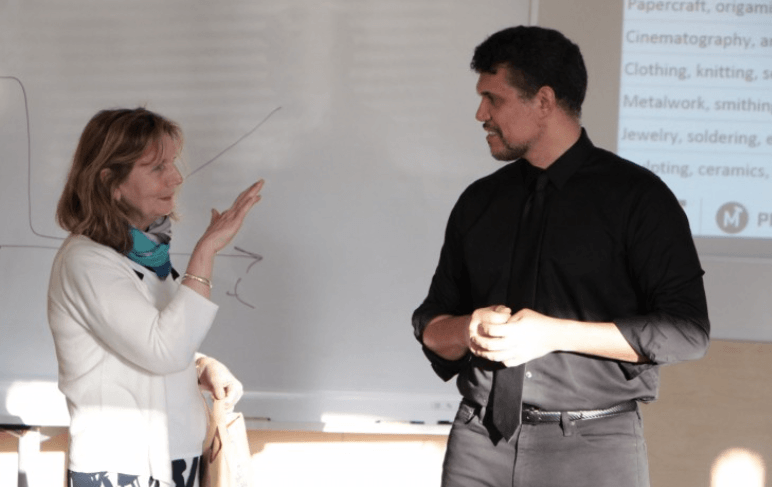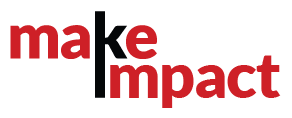
Professor Marty Culpepper and Saana McDaniel, on behalf of the Make Impact Consortium, recently visited Fontys University of Applied Sciences and Eindhoven University of Technology in Eindhoven, The Netherlands for a series of lectures and tours. They also hosted a workshop with Makerspace managers at Fontys. Fontys has joined the Make Impact Consortium as a Founding Member. An article was written on the visit (in Dutch).
*Rough English Translation”
Fontys Hogeschool Engineering has recently joined forces with Massachusetts Institute of Technology (MIT) in the ‘Make Impact Consortium’. MIT professor Marty Culpepper came to Eindhoven to explain this interdisciplinary program. “Give students confidence, because then they will feel ownership.”
Marty Culpepper, together with his MIT colleague Saana McDaniel, devised the Make Impact program, which focuses on the integration of technology, innovation, making and entrepreneurship within schools and technological innovation ecosystems. The aim of the program is to accelerate innovation in the region, including by having students work in makerspaces.
Fontys is already actively involved in this, Joep Houterman of the Executive Board explains in his introduction. Hundreds of Fontys students already work with the business community in hybrid learning environments. An example of this are the IT students who work on solutions together with IT companies in their own building at Strijp in Eindhoven. The same is already happening at the Automotive Campus in Helmond. “Because of this innovative way of training, it no longer feels like going to school for the students.”
It’s about people
“It is important to realize that technological innovation is primarily about people,” Culpepper emphasizes. “If something has to be done, it’s not fun. You will only really get pleasure if you discover things with your friends. We give our students a push. We put them together in one room and let them find out where their talents lie through projects. The result is that the students organize and arrange everything themselves and that they are often busy until late in the evening, yielding beautiful and innovative results. ‘
Students become mentors in the Make Impact program. There are technicians present for guidance when using hazardous machines, but as soon as they can students take over that role. Culpepper: ‘Because we give our students freedom and confidence, they feel ownership and make an impact on their environment’. Even after graduation the alumni can continue to use the spaces, which in turn creates an exchange with the students.
Makerspaces
MIT already has dozens of makerspaces for its students, for applications in all kinds of technical areas, such as metalworking, additive manufacturing (3D printing), woodworking, electronics and product design. But also for other apparently less technical applications such as graphic design, fashion, animation, creative cooking or goldsmithing, which are also very popular among their technical students. Through an app (Mobius), students can find out where the devices are that they need for their project. That app will also be available for Fontys.
In addition, videos and knowledge are exchanged within the Make Impact Consortium about the use of machines and equipment. Culpepper indicates that Fontys may use MIT’s user videos and says that it is interested in the online material that Fontys has made about the use of 3D printers. They don’t have that yet. ‘Making the films costs thousands of dollars. Nice knowledge can be shared in this way. ‘
TEC spaces
When does Fontys implement this, one of the students present asks. Ella Hueting, director of Fontys Hogeschool Engineering, says that in June a group of teachers will go to a boot camp organized by the Make Impact Consortium to get acquainted with this method. ‘I am eager to introduce the concept at Fontys, in the form of TEC spaces (Technology, Entrepreneurship, Creativity). Ideas for this are currently being developed within different institutions and these can be given an extra boost through cooperation in the Consortium.
The meeting hosted the Eindhoven Engine innovation accelerator, a joint venture between Fontys, TU / e, TNO and companies in the Brainport region. Students, teachers and representatives from the business world were seated in the room.
Author: Ingrid Oonincx

